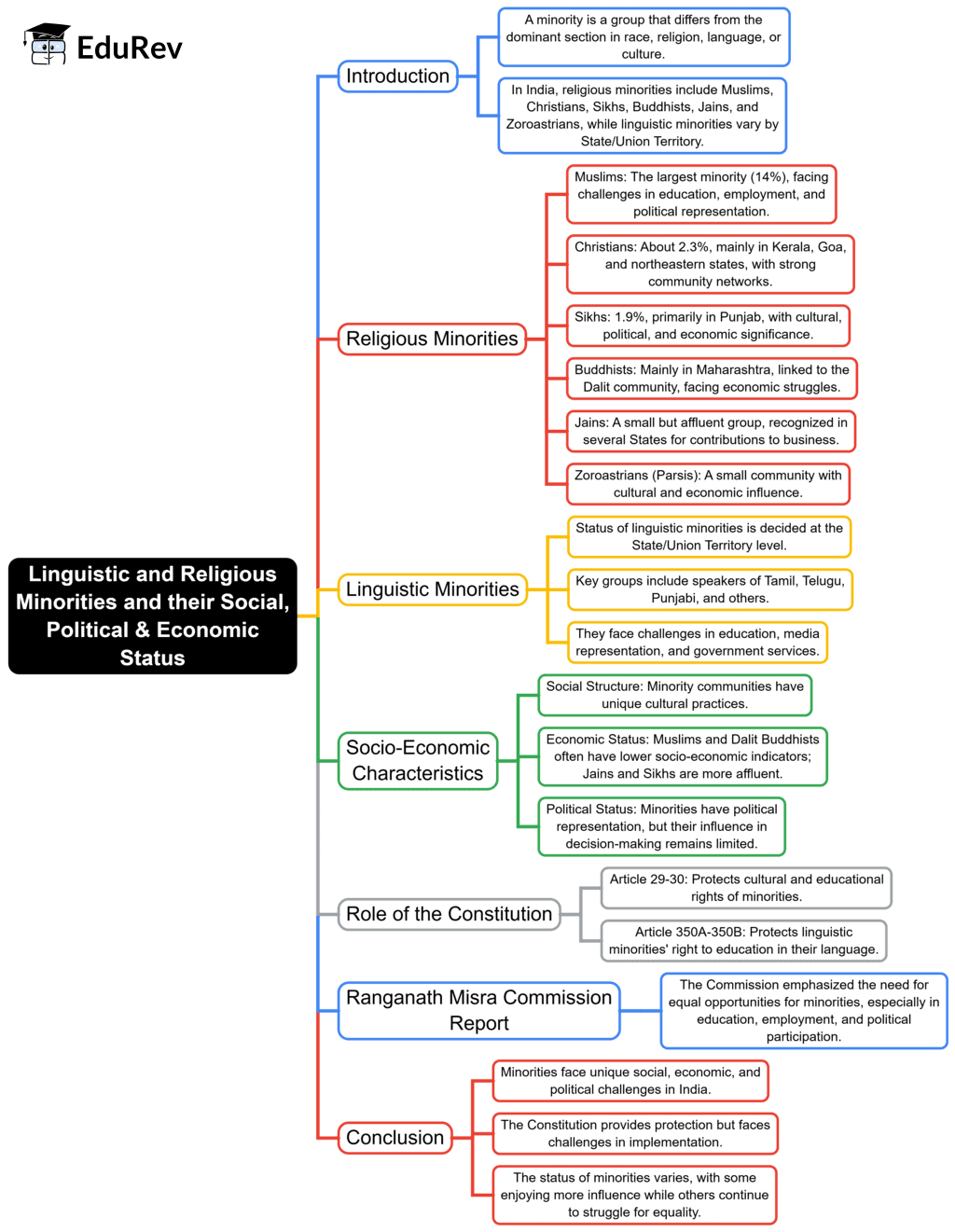UPSC Exam > UPSC Notes > Anthropology Optional for UPSC > Mind Map: Linguistic and Religious Minorities and their Social, Political & Economic Status
Mind Map: Linguistic and Religious Minorities and their Social, Political & Economic Status | Anthropology Optional for UPSC PDF Download

The document Mind Map: Linguistic and Religious Minorities and their Social, Political & Economic Status | Anthropology Optional for UPSC is a part of the UPSC Course Anthropology Optional for UPSC.
All you need of UPSC at this link: UPSC
|
209 videos|299 docs
|
FAQs on Mind Map: Linguistic and Religious Minorities and their Social, Political & Economic Status - Anthropology Optional for UPSC
| 1. What are the key challenges faced by linguistic and religious minorities in India? |  |
Ans. Linguistic and religious minorities in India face several challenges, including social discrimination, lack of political representation, limited access to education and employment opportunities, and cultural marginalization. These challenges often stem from prevailing societal biases and systemic inequalities that hinder their integration and participation in mainstream society.
| 2. How does the Indian Constitution protect the rights of linguistic and religious minorities? |  |
Ans. The Indian Constitution provides several provisions to protect the rights of linguistic and religious minorities. Articles 29 and 30 ensure the right to conserve culture, language, and script, and the right to establish and administer educational institutions. Additionally, Article 15 prohibits discrimination on grounds of religion, race, caste, sex, or place of birth, which helps safeguard minority rights.
| 3. In what ways can the economic status of linguistic and religious minorities be improved? |  |
Ans. The economic status of linguistic and religious minorities can be improved through targeted government schemes, access to quality education, vocational training, and financial support for entrepreneurship. Additionally, creating awareness about their rights and providing access to social welfare programs can help uplift their economic conditions.
| 4. What role do political representation and participation play in addressing the issues of minorities? |  |
Ans. Political representation and participation are crucial for addressing the issues of minorities as they ensure that their voices are heard in decision-making processes. Representation in legislative bodies allows minorities to advocate for their rights and interests, leading to better policy formulation and resource allocation to address their specific needs.
| 5. How can society promote inclusivity and cohesion among different linguistic and religious communities? |  |
Ans. Society can promote inclusivity and cohesion by fostering dialogue and understanding among different communities, celebrating cultural diversity, and implementing educational programs that emphasize tolerance and respect. Encouraging interfaith initiatives and community engagement can also help build bridges between linguistic and religious groups, promoting a sense of belonging and unity.
Related Searches





















